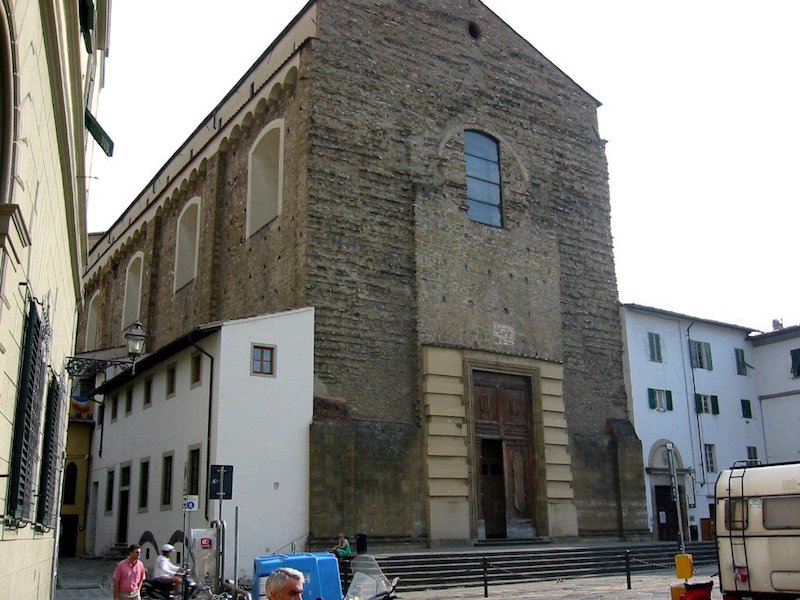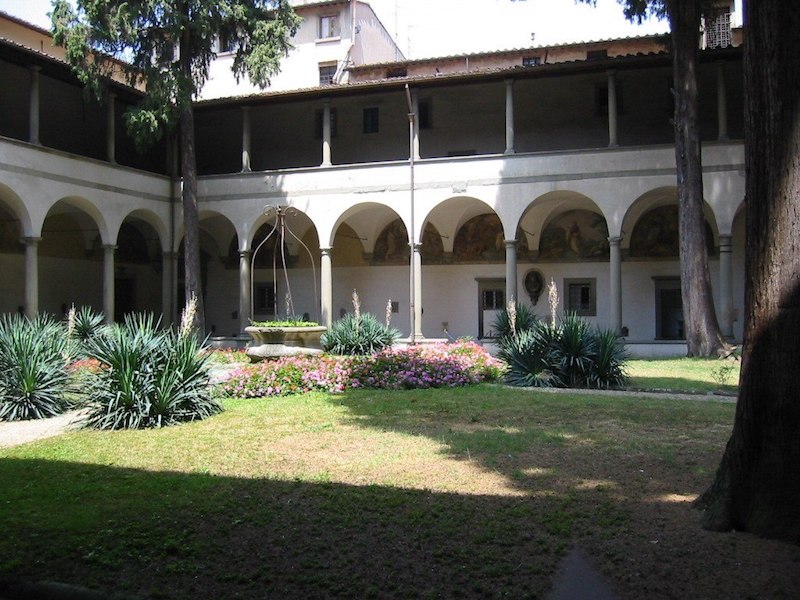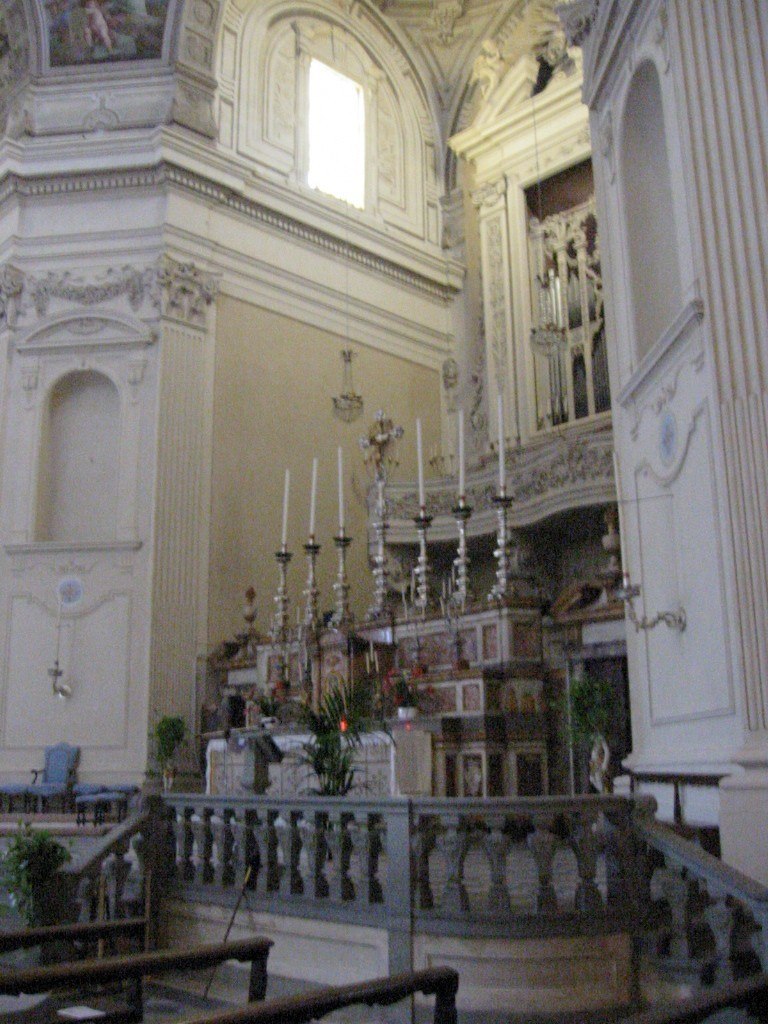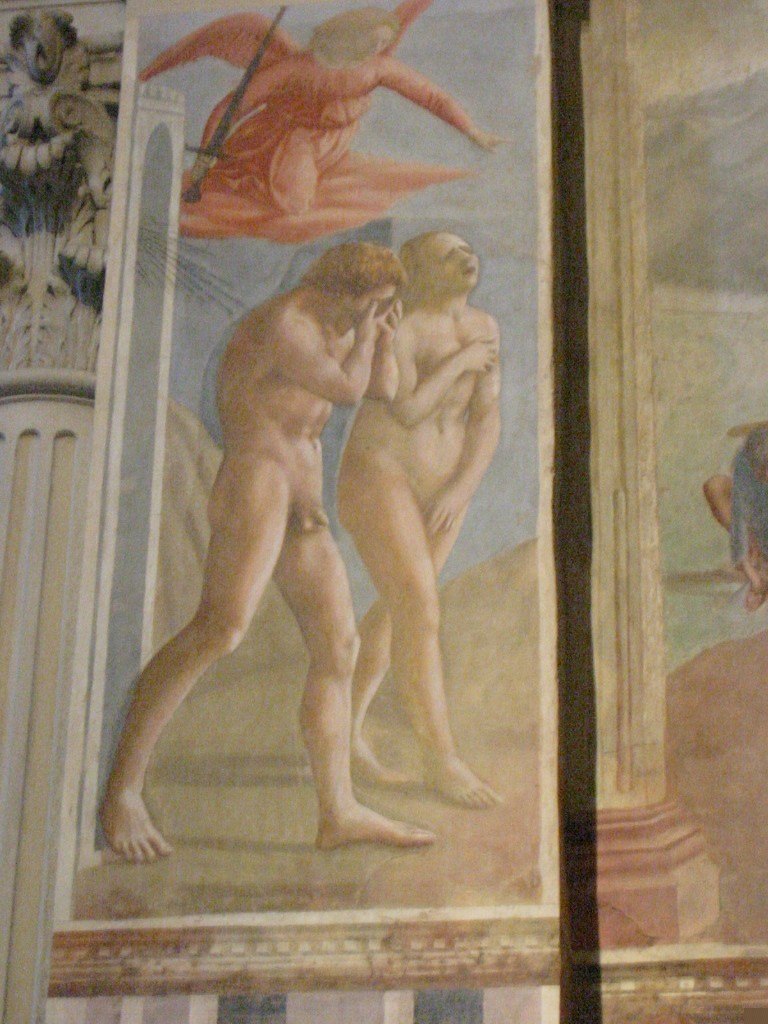
Santa Maria del Carmine and the Cappella Brancacci

 The
Maria del Carmine and the Cappella Brancacci complex is located in
Oltrarno, just off the Piazza del Carmine. It has a nondescript
exterior, one that gives little indication of being a church, and even
less of an indication that the art that launched the Renaissance is
contained within. The Maria del Carmine (whose cloister courtyard is
shown to the left) was set up Carmelite friars from Pisa in the 1200's.
Barely visible in the picture to the left are the frescoes that line
the upper walls of the cloisters. The main attraction, however, is the
Brancacci Chapel, located behind the cloisters. An ornate Cappella,
the Brancacci Chapel is lavishly adorned with frescoes. The photo to the right shows
the vault at the end of the chapel, opposite the altar. (The
photographs are all a bit grainy, as the chapel is very dark, and no
flash photography is permitted).
The
Maria del Carmine and the Cappella Brancacci complex is located in
Oltrarno, just off the Piazza del Carmine. It has a nondescript
exterior, one that gives little indication of being a church, and even
less of an indication that the art that launched the Renaissance is
contained within. The Maria del Carmine (whose cloister courtyard is
shown to the left) was set up Carmelite friars from Pisa in the 1200's.
Barely visible in the picture to the left are the frescoes that line
the upper walls of the cloisters. The main attraction, however, is the
Brancacci Chapel, located behind the cloisters. An ornate Cappella,
the Brancacci Chapel is lavishly adorned with frescoes. The photo to the right shows
the vault at the end of the chapel, opposite the altar. (The
photographs are all a bit grainy, as the chapel is very dark, and no
flash photography is permitted).

 Equally impressive is the
altar located to the right of the pews in the Brancacci chapel, a
series of large candelabras in front of a large pipe organ. The main altar area contains a
series of frescoes begun by Masolino da Pincale in 1424, commissioned
by Felice Brancacci, a wealthy Florentine merchant. Four years later,
Massacio took over for Masolino, but died later that year. The
remainder of the frescoes were completed much later (in the 1480's) by
Filippo Lippi. The original frescoes by Masolino dealt with the life
of St. Peter, but the completed set of panels begin with Adam and Eve.
Of course the masterpiece here is Massacio's Expulsion of Adam and
Eve from Paradise (bottom left). This is one of the earliest
examples of realism, created through the use of chiaroscuro and
linear perspective, both of which set the tone for much of the
Renaissance. However, it is interesting to note that this painting is
but one small panel in the upper left hand corner
Equally impressive is the
altar located to the right of the pews in the Brancacci chapel, a
series of large candelabras in front of a large pipe organ. The main altar area contains a
series of frescoes begun by Masolino da Pincale in 1424, commissioned
by Felice Brancacci, a wealthy Florentine merchant. Four years later,
Massacio took over for Masolino, but died later that year. The
remainder of the frescoes were completed much later (in the 1480's) by
Filippo Lippi. The original frescoes by Masolino dealt with the life
of St. Peter, but the completed set of panels begin with Adam and Eve.
Of course the masterpiece here is Massacio's Expulsion of Adam and
Eve from Paradise (bottom left). This is one of the earliest
examples of realism, created through the use of chiaroscuro and
linear perspective, both of which set the tone for much of the
Renaissance. However, it is interesting to note that this painting is
but one small panel in the upper left hand corner
 of the altar
area. Equally notable is the comparison of Massacio's profoundly vivid
and real depiction of St. Peter, which contrasts markedly with the more
otherworldly St. Peter of Masolino. One could say that the spirit of
Renaissance painting began with this single obscure panel in the
Branacci Chapel.
of the altar
area. Equally notable is the comparison of Massacio's profoundly vivid
and real depiction of St. Peter, which contrasts markedly with the more
otherworldly St. Peter of Masolino. One could say that the spirit of
Renaissance painting began with this single obscure panel in the
Branacci Chapel.